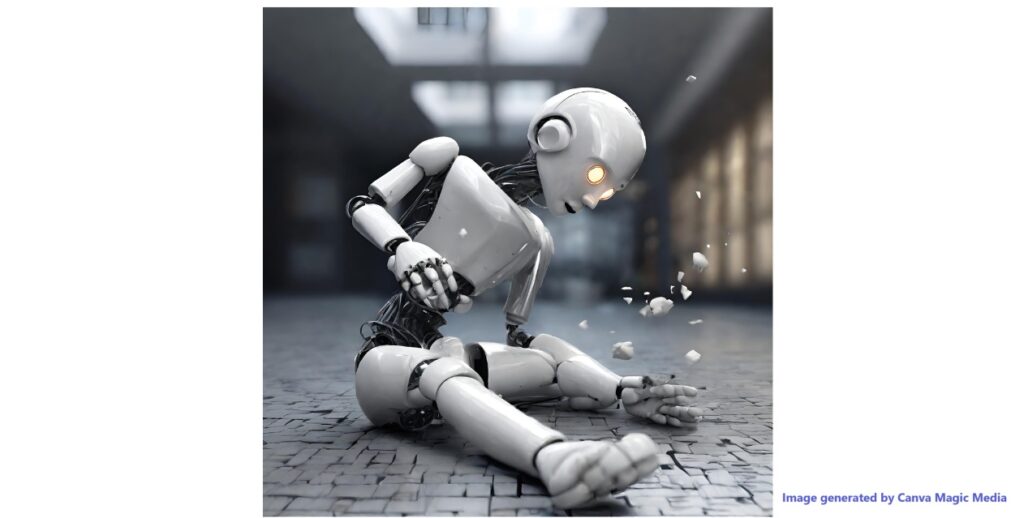The rapid rise of powerful, breakthrough AI technologies like ChatGPT has generated a lot of excitement in the IT world, but also concerns about threats to security and privacy. Some tech leaders have even publicly voiced concern that AI poses a “risk of human extinction” and called for a pause on AI development. How does one separate Siri from Skynet? Let’s start by defining AI.
What do they mean by AI?
Why is AI taking off now?
What not to worry about
Transformers are specialized for the purpose of natural language processing. They can be adapted for use in similar applications, but their simplified architecture imposes limits on how many things a single model can accomplish. Existing implementations are pre-trained, meaning they do not learn over time. These factors make transformers almost certainly incapable of true cognition. They cannot actually think, plan, or have their own goals.
What you should be worrying about
The strength of transformers — the thing that makes us believe that they’re so capable — is in their ability to produce human-like output — like the illustrations used in this blog post. This feat impresses us, speaks to us, and makes us believe that the system is smart, that it knows things, and that it has judgement. But this is simply not the case.
Transformers on their own are not dangerous, but bad actors can use them to augment their abilities, and we as users can be lulled into relying on them for things transformers cannot do well.
Some of the ways that bad actors can use transformers to do harm include:
- Using text-generating transformers to generate or translate phishing or scam e-mails that are difficult to distinguish from legitimate communications.
- Use voice-generating transformers to emulate the voice of known officers of an organization in order to trick employees into divulging sensitive information or to take damaging actions.
- Use image-generating transformers to create false documentation for purposes of fraud or to create false evidence of wrongdoing.
Some of the ways that transformers can lead users to make bad decisions include:
- Mistake a transformer’s ability to create believable output for an actual ability to do real research.
- Rely on a transformer to teach them skills, receiving plausible — but incorrect — answers to their questions.
- Utilize code generated by a transformer in their software products, despite that code being insecure.
Unfortunately, a tool which can generate realistic text, voice, and audio without having any awareness or understanding of what it’s doing is perfect for applications where the output doesn’t need to be correct, it just needs to be believable. There are legitimate uses, but for most of those uses the output needs to be reviewed for accuracy by a subject-matter expert before it can be trusted. Worse, for illegitimate uses, this complication isn’t important: a phish just needs the recipient to be fooled long enough to click a link or open an attachment for their computer to be compromised!
Tangible can help
For over 25 years, security-minded organizations have trusted Tangible Security with protecting their sensitive assets. We offer a full range of services from penetration testing and risk assessments to staff training, compliance assessments, and staff augmentation such as fractional CISOs that will ensure security in your organization becomes tangible.
Our services to prevent threats like AI-generated phishes, scams, and fraud include:
- Security awareness training provides organizations with targeted educational programs to raise awareness among employees about cybersecurity risks and best practices. Our training sessions cover a wide range of topics, including phishing attacks, social engineering, password hygiene, data protection, and incident reporting. By engaging in Security Awareness Training, organizations can empower their employees to become the first line of defense against cyber threats, cultivate a security-conscious culture, and mitigate the risks associated with human error and negligence.
- Penetration and security testing includes vulnerability assessments, penetration testing, reverse engineering, source code reviews, physical security, and social engineering testing, threat emulation, cloud security, ICS/OT security assessments and deploying red and purple teams.
Tangible Security is ready to provide expert, tailored, and personable cybersecurity consultation. For more information on how we can help your business, Contact us today.




Recent Comments